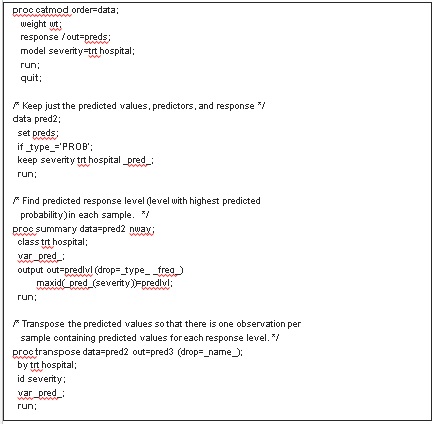Our perceptions can impact others and influence decisions. As a result, I always like to understand each customer's perception of what SAS is and what we do.
There is no right or wrong answer to this question, however the response provides me with a chance to listen to our customers. As I'm listening, I try to understand if their perceptions are in line with the broad capabilities and range of solutions that SAS has been evolving and developing for 37 years that help customers solve their business issues.
Usually, customers will have different perceptions of what SAS is, based heavily on when they may have first used SAS or how they may have used it years ago. For many who know and love the SAS programming language, their perception of SAS may look something like this, which we can call SAS for programmers:
However, the above illustration is definitely not the only way SAS can or should be used. Yes, coding your own programs still works, which shows SAS' commitment to our customers with that ability. As I mentioned, though, SAS hasn't just stood still (like many of our competitors would like to make you think). We have evolved to meet the changing needs of all of our customers. As a result, some of our customer's may have a perception of SAS that looks more like this, which we can call SAS for business.
Neither perception is right or wrong, they are actually both accurate based on your particular point of view. Sometimes, SAS is thought of as only an analytics engine, which again is only partially correct. We have developed SAS into an enterprise decision management system that offers broad capabilities for information management, analytics, and business intelligence. We call this the business analytics framework . Furthermore, we have developed specific industry solutions based on this framework. For example, check out our solutions for Oil and Gas or for Utilities.
Now, I must ask, what is your perception of SAS? And has this blog post impacted how you may answer this question in the future?



3 Comments
Great post that I'll be referring people too. I'm surprised in the conversations I have with people, that either use SAS or don't, that their perception of SAS is still only programming... Once they are exposed to the business analytics framework and the variety of SAS offerings, the conversation becomes more around "how did I not know this, tell me more".
David,
Anyone's perceptions of SAS are developed over time and experience with SAS. Some who have long term exposure to SAS and its evolution over time will definitely have a different view from those who are new to SAS at an installation where a completely new install of a SAS "solution" has been done.
At our large(ish) SAS site we have a very large investment in SAS application code of the hand crafted type. We have "legacy" applications based on SAS development technologies that have not really evolved over time, and those legacies are hard to move forward in the face of a number of technical, business, and people barriers.
We have adopted a number of new SAS technologies as they have emerged. When I look back I can see that some of these were brilliant innovations by SAS that where ahead of their time, and led us to create these legacies, because the idea got overtaken by others, and by technology change.
I can also see significant business value being driven by the new "solutions" we have adopted. We have bent these to new applications, and made them fit our particular mode of operation and our standards and processes. Sometimes that has been a little difficult to get SAS people to understand.
A lot of perception creation is down to the people at SAS, not just the products and solutions. A solid productive relationship between the people at a SAS customer site and the SAS people who engage with us is based on human interaction. A long term relationship has to survive the tension between short term sales imperatives and long term business and technology strategies on both sides.
I am a bit worried that the ability of a customer to craft their own solutions (from scratch) using SAS (Foundation) application development tools may be made more difficult. But then we used to do our own car maintenance in our back yards. That doesn't happen so much any more. I recall a SAS Forum BOF a few years ago where this was debated with some vigour.
We are engaging with SAS to take our platform forward. I have the strong feeling that we will emerge with a revised and updated platform that transitions us to a more visual, interactive, exploratory, business analytics focused way of doing things with SAS. It will be the engagement with the SAS people on the ground that will determine our success to a large degree.
Great points Mike and I couldn't agree more about the "technical, business, and people barriers" you mentioned. This maps back to one of my previous blogs on how SAS solves problems using ppt - people (people), process (business), and technology (technical). Furthermore, I would suggest you look at our new on-line Business Analytics Assessment http://bit.ly/1cj1OvE as a free service we offer on this very topic which can help align people and better prepare them for the type of transition you mentioned.